From the moment they first laid eyes on the masterpiece, fans knew that Sam Mendes’s hit film 1917 would be celebrated at the 92nd Academy Awards in some way. The film won three Oscars: Best Sound Mixing, Best Cinematography, and Best Visual Effects, all of which were well-deserved. And while this film is fictional, it’s set in during a war that not only really happened, but dramatically changed the world forever, even setting the stage for next World War.
Still, even with the knowledge that this film is mostly fiction, fans and historians alike have dissected many aspects of the film to discover which ones are grounded in truth and which that were created exclusively to advance the film’s plot.
Actually Happened: The German Military Performed A Strategic Withdrawal
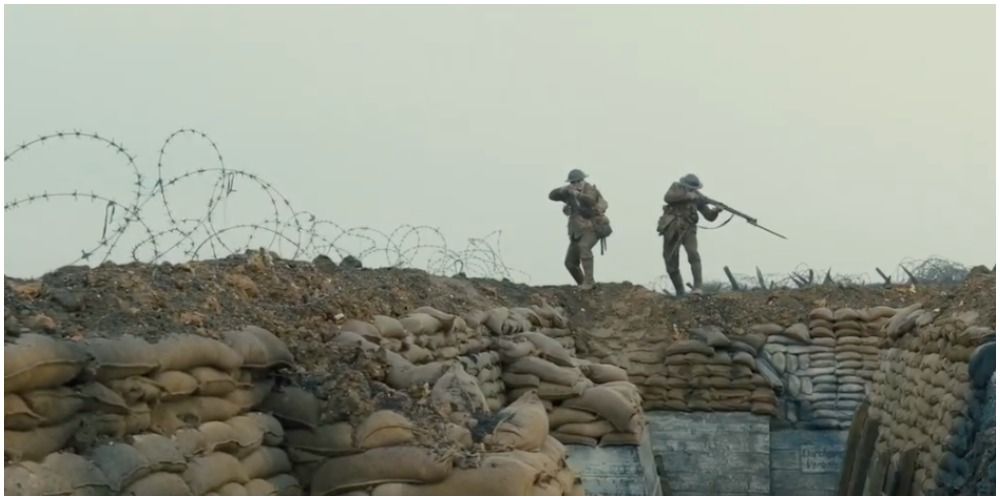
Operation Alberich occurred when the German military enacted a strategic withdrawal in an attempt to crush Allied forces in France in 1917.
Though this strategy ultimately did not win them the war, it is the sole reason why Blake and Schofield were only greeted by explosive traps and rats within the German trenches that had previously been occupied.
Created For The Movie: The Woman And The Infant
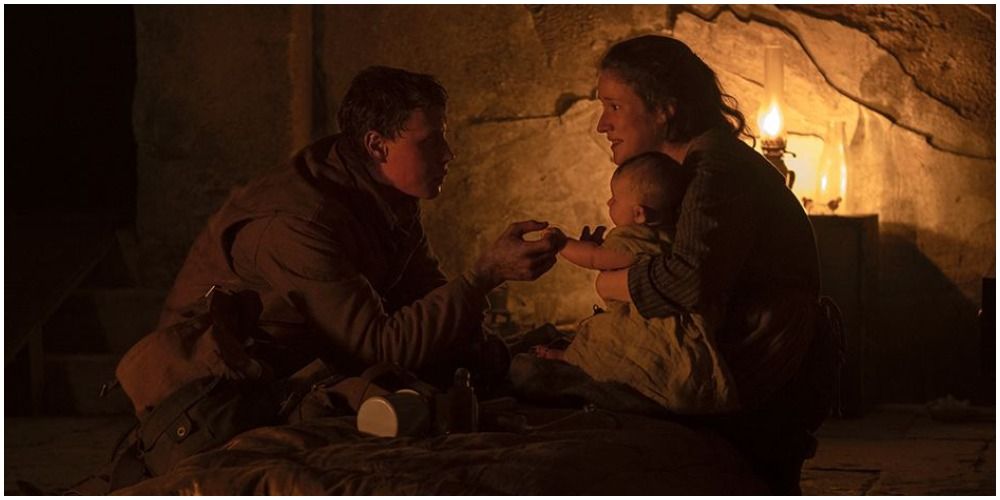
While there were thousands of innocent civilians caught in the crossfire in World War I, there isn’t any kind of record of a woman in a destroyed French village who was trapped in her home with an infant. Sure, there was most likely a woman and a baby in reality who found themselves in a similar predicament, but this specific woman isn’t based on anyone from records.
She was created as one of the many fictional characters in the movie, most likely to show viewers how the war impacted two of the most vulnerable groups of people who couldn’t even fight themselves: women and children.
Actually Happened: Trench Warfare
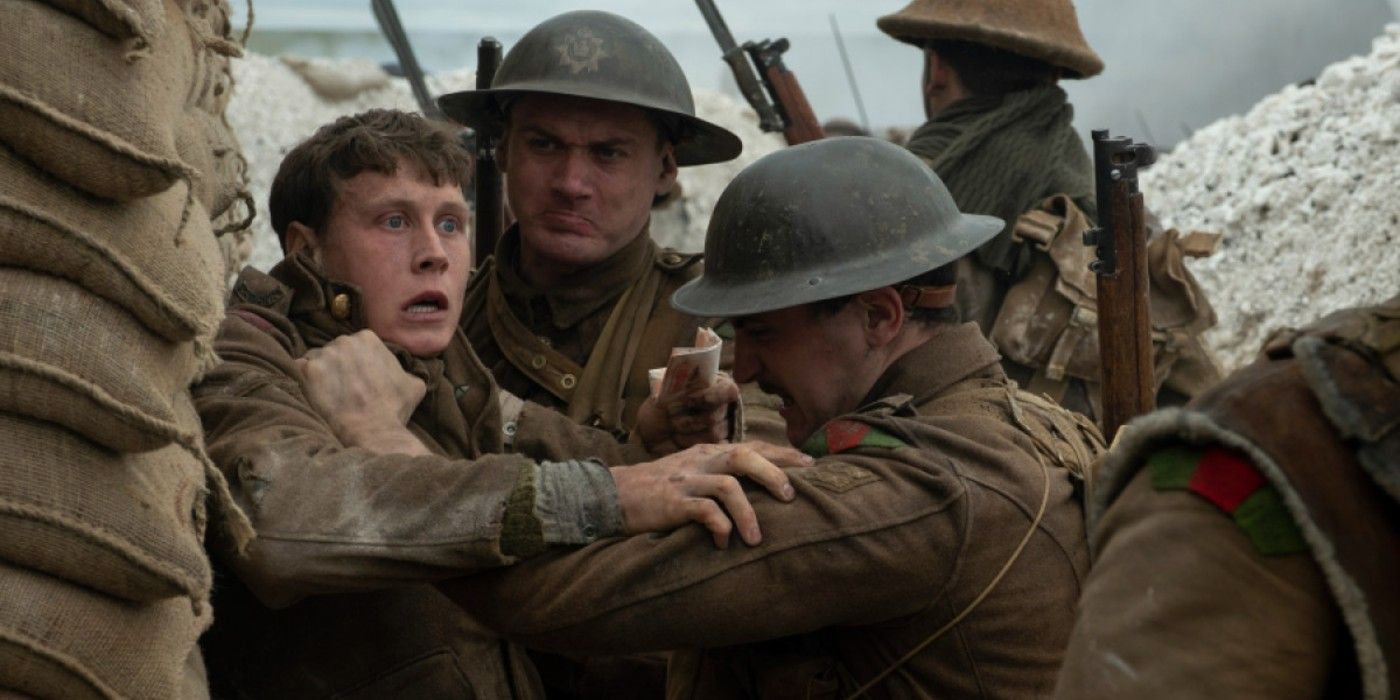
While the trenches may have been a little too tidy in the film, World War I was actually fought in trenches where soldiers ate, slept, and strategized in.
Just as the film illustrated, these trenches were often grounds for long stalemates, with neither side making significant gains on the other for days (even weeks)!
Created For The Movie: A Single Soldier Storming Écoust-Saint-Mein
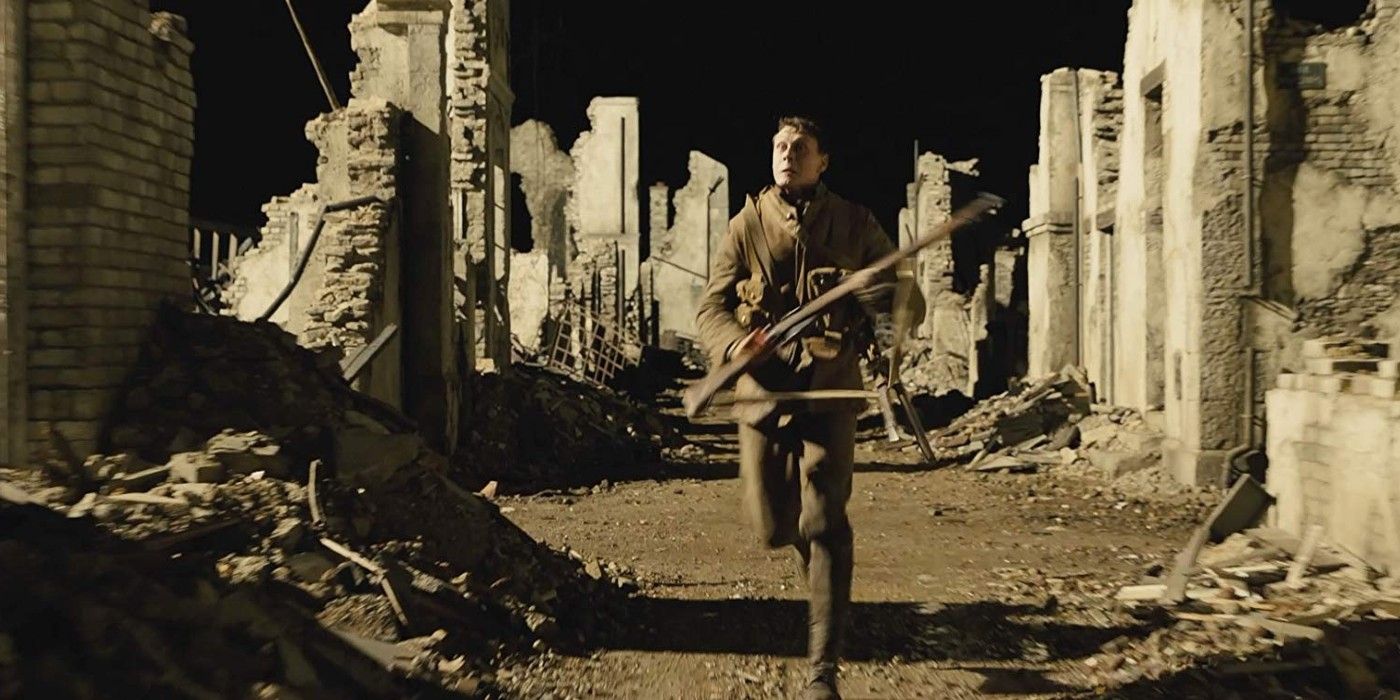
Perhaps the most harrowing part of the movie takes place when Schofield finds himself in Écoust-Saint-Mein, a tiny French town overrun by German forces. From the moment he steps foot onto the territory, Schofield finds himself under enemy fire, but eventually, he manages to sprint his way to safety.
While it was amazing to see Schofield outrun bullets, German soldiers, and flares in a situation that seemed so hopeless, viewers should know that nothing like this actually happened in the war. If a soldier even worked up the guts to attempt something like this, he would most surely be shot down by the troops that far outnumbered him.
Actually Happened: There Were Runners In The War

With the absence of modern-day communication technologies like cell phones or the internet, soldiers had fewer, less efficient methods of communicating with one another during World War I. Much like in the movie, runners were deployed to deliver important messages across battlefields, and were often deployed in pairs so that a message could still be delivered even if one of the runners died. Given the fact that there was a high possibility that runners could be killed by German snipers, they were sent out only in desperate situations.
Much like the two main characters, Mendes’ grandfather actually served as a runner for the British, meaning that Mendes’ depiction of runners comes straight from the memory of someone who actually lived through such an ordeal.
Created For The Movie: The Mission
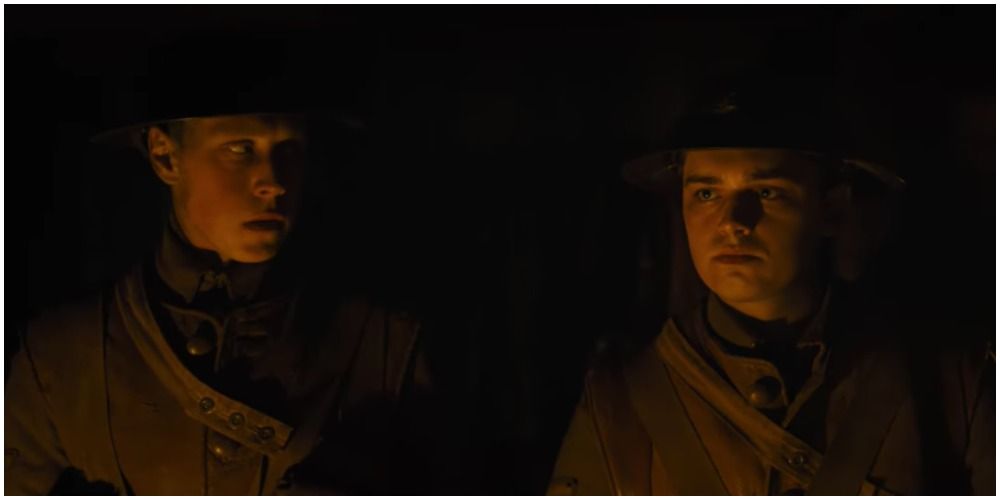
The deployment of runners for such a vital mission as the one Blake and Schofield are assigned would never happen in reality. While runners were an important source of communication during World War I, they weren’t the only way soldiers could communicate across vast distances. The movie attempts to justify the deployment of Blake and Schofield by telling viewers early on that the Germans apparently cut phone lines, but before jumping to the deployment of runners, they could’ve made a phone call to the rear area of the jeopardized battalions instead, or could’ve sent pigeons or even planes to drop the message.
In Saving Private Ryan, a whole squad of soldiers are sent out to find and save one man, so it also makes no sense why in 1917, only two soldiers are sent out to save the lives of hundreds.
Actually Happened: Uniforms And Equipment

While 1917 didn’t win the Oscar for Best Costume Design, the costumes of both the Allied and German soldiers are very accurate to what they would’ve been wearing a century ago. It’s no surprise that the look of World War I soldiers could be captured so accurately, considering the vast amount of historical documentation of soldiers on both sides of the conflict that is so readily available.
Viewers everywhere should appreciate the fact that Mendes and his team placed extra attention to the smallest details, even down to the dog tags that were mandated for all soldiers to wear on their person during this war.
Created For The Movie: A Single Soldier Running Along The Trench
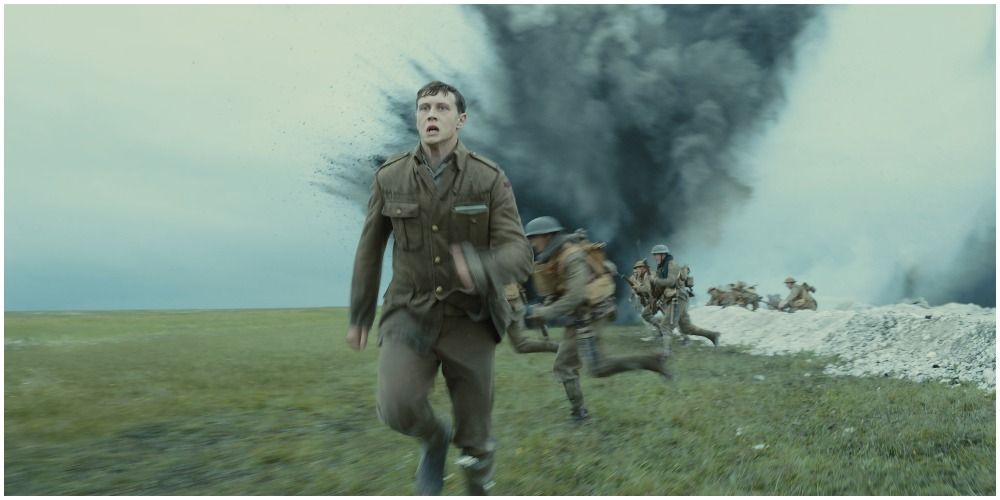
When it looked like Schofield wouldn’t make it to Colonel Mackenzie in time to delay the attack due to the soldiers packed elbow-to-elbow in the trenches, Schofield did the unthinkable and ran along the trench from the ground, leading to a beautiful scene where he charges through the countless men rushing to their deaths.
There’s no such occurrence of any man successfully sprinting along the trenches in this manner. The very real possibility of being shot by a German sniper would’ve deterred any man from attempting such a stunt.
Actually Happened: Wayfaring Stranger Singalong
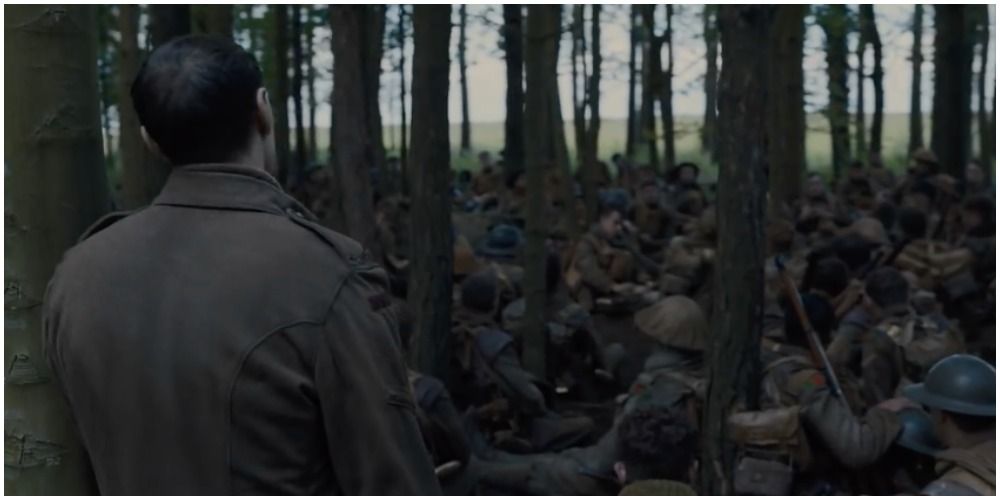
When Schofield finally reaches the group of soldiers he’d been searching for all along, he stumbles upon them sitting in the middle of the forest, enjoying a serenade of the well-known American folk song “The Wayfaring Stranger”. The lyrics date back as far as 1858, meaning that the song wasn’t just created solely for the movie.
While there is no proof that Allied forces sang this song, the song’s prominence in the Western world, as well as its somber tone, would make it a perfect tune for soldiers engaging in the fight of their lives as they mentally prepared themselves to go out in a blaze of glory.
Created For The Movie: Blake And Schofield
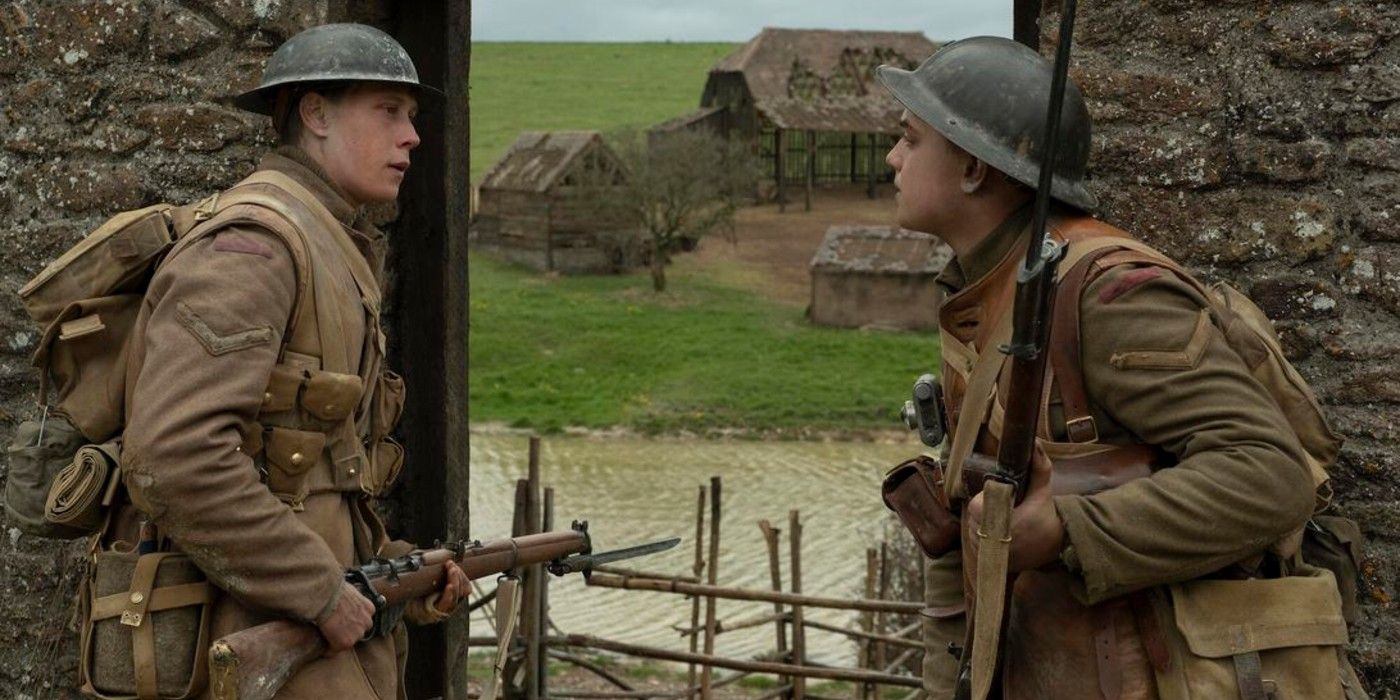
As likable as they are, Blake and Schofield, the two main protagonists of the film, didn’t actually exist.
Sure, they might be inspired by soldiers that Mendes’s grandfather met during his time in the war, but there’s no kind of record proving that these two characters exist, which is unfortunate given how realistic and multidimensional they both are.




